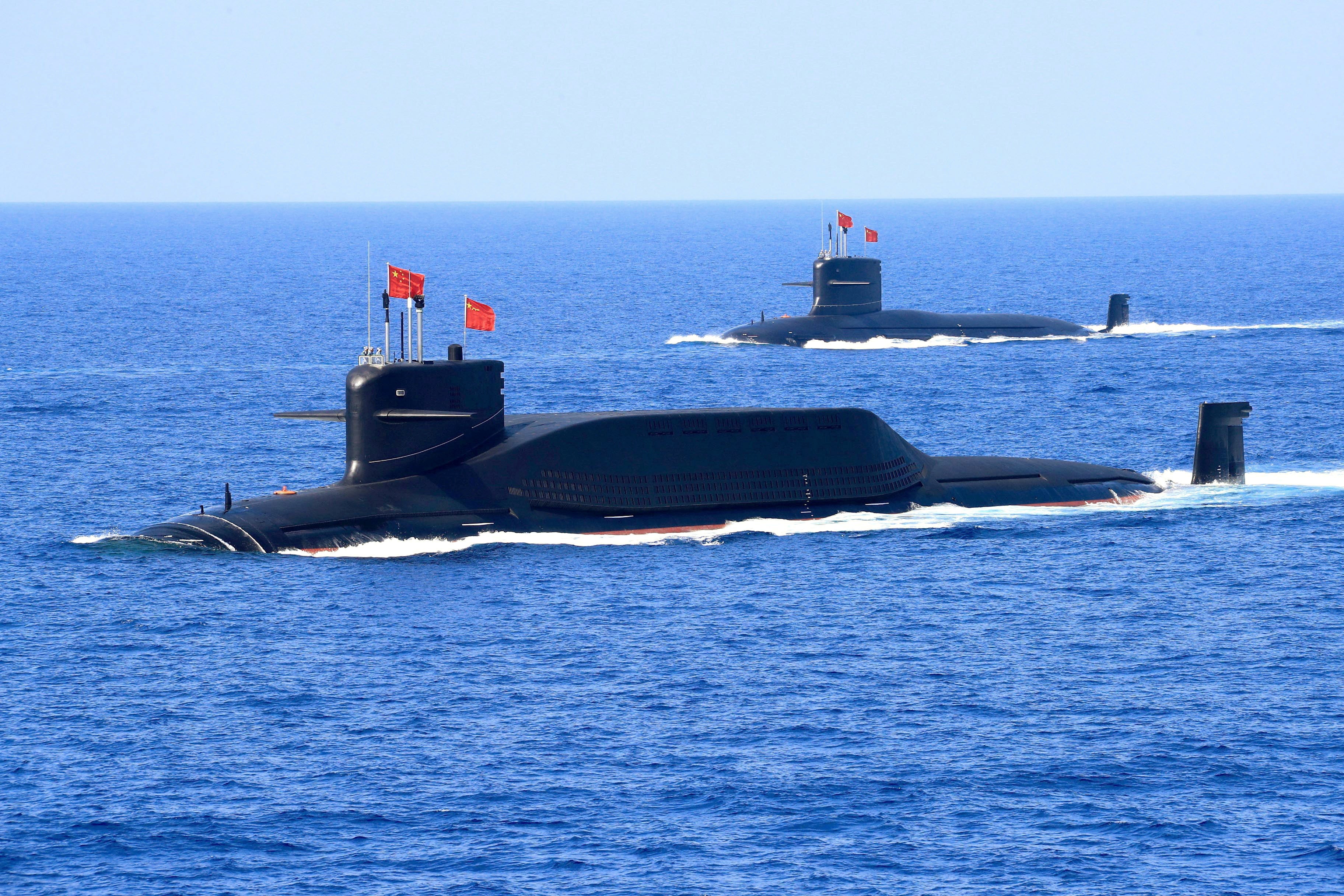Satellite imagery shows Chinese nuclear-powered submarine surfacing in Taiwan Strait
The ballistic submarine was spotted at a time Beijing has escalated its offence on Taiwan

Your support helps us to tell the story
From reproductive rights to climate change to Big Tech, The Independent is on the ground when the story is developing. Whether it's investigating the financials of Elon Musk's pro-Trump PAC or producing our latest documentary, 'The A Word', which shines a light on the American women fighting for reproductive rights, we know how important it is to parse out the facts from the messaging.
At such a critical moment in US history, we need reporters on the ground. Your donation allows us to keep sending journalists to speak to both sides of the story.
The Independent is trusted by Americans across the entire political spectrum. And unlike many other quality news outlets, we choose not to lock Americans out of our reporting and analysis with paywalls. We believe quality journalism should be available to everyone, paid for by those who can afford it.
Your support makes all the difference.A Chinese nuclear-powered submarine was spotted transiting the Taiwan Strait on 29 November, according to an analysis of satellite imagery from the European Space Agency.
Columnist and military expert HI Sutton shared an image of a submarine, identified as a Type-094 Jin Class SSBN, taken by the European Space Agency's Sentinel-2 satellite.
“Although Sentinel-2 is low resolution, the wake patterns are characteristic of a submarine with a typical rounded bow. The length best fits the Type 094 and the context aligns,” Mr Sutton wrote on his website Covert Shores.
He suggested that the submarine was transiting north from a submarine base at Yulin in the South China Sea and that the transit was likely a routine procedure, as Chinese submarines return to the Bohai shipyard, located at the Bohai sea, for repairs.
However, a US Navy P-8A anti-submarine patrol aircraft was also spotted flying over the Taiwan Strait from the Misawa Air Base in Japan on Monday, according to Beijing-based think-thank South China Sea Strategic Situation Probing Initiative.
The sighting of the Chinese ballistic submarine and the US patrol aircraft comes at a time Beijing has escalated its pressure on Taiwan through a series of incursions in its airspace.
Taiwanese defence minister Chiu Kuo-cheng on Monday said that recent developments in the Taiwan Strait have made the cross-strait situation worse. In October, he said tensions with Beijing were at their worst in 40 years, warning of the risk of an accidental clash between the two.
On Sunday, the Taiwanese defence ministry said 27 Chinese aircraft had entered its air defence buffer zone, following which it scrambled combat aircraft to “warn” the Chinese planes.
Beijing’s latest incursion included 18 fighter jets and five H-6 bombers, as well as a Y-20 aerial refuelling aircraft, Taiwan’s defence ministry said.
China maintains that Taiwan is a part of its national territory, even though the island has been self ruled since it split from the mainland in 1949 after a civil war.
The country has not ruled out the use of force to bring the island under its control and has been beefing up its military activities around Taiwan, including flying a record number of warplanes into Taiwan’s airspace.
The Taiwanese government earlier cited 554 “intrusions” by Chinese warplanes into its southwestern air defence identification zone between September 2020 and the end of August this year.
The accusations come as Taiwan grows closer to the US in the face of the perceived threat from China.
During the first virtual summit between US president Joe Biden and China’s Xi Jinping, the leaders locked horns over Taiwan. Mr Biden told his counterpart that the US was strongly opposed to “unilateral efforts to change the status quo” or undermine peace and stability across the Taiwan Strait.
In response, the Chinese premier warned his counterpart that supporting Taiwan’s bid for independence would be “like playing with fire” and that Beijing was prepared to take “decisive measures”.
Last week, five US lawmakers paid a surprise visit to Taiwanese president Tsai Ing-wen, a move that left Beijing fuming.
Following the visit, Chinese foreign ministry spokesperson Zhao Lijian told the US “not to play the Taiwan card, because it’s a bad card, and a losing hand”. He also reminded the US not to breach the One-China policy or send the wrong message about “Taiwan independence”.
Meanwhile, lawmakers from three Baltic states met with the Taiwanese president on Monday in a sign of further cooperation with the European Union.
Join our commenting forum
Join thought-provoking conversations, follow other Independent readers and see their replies
Comments